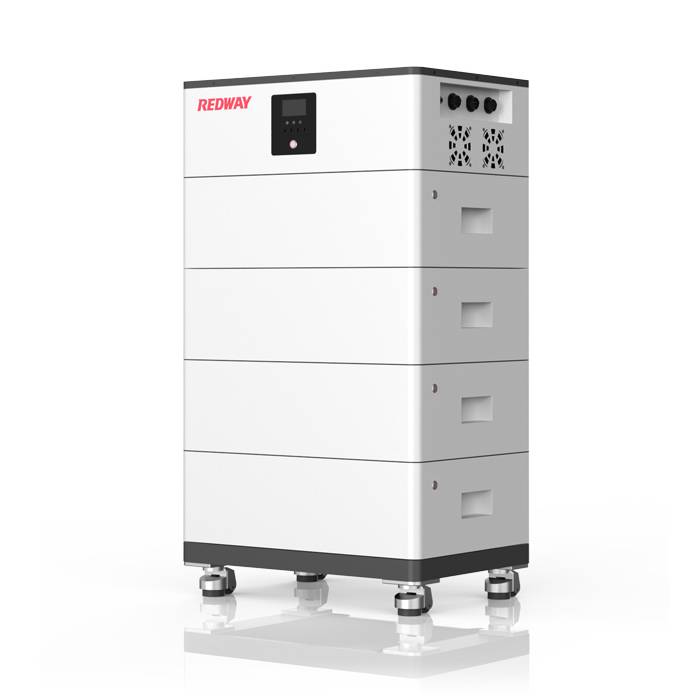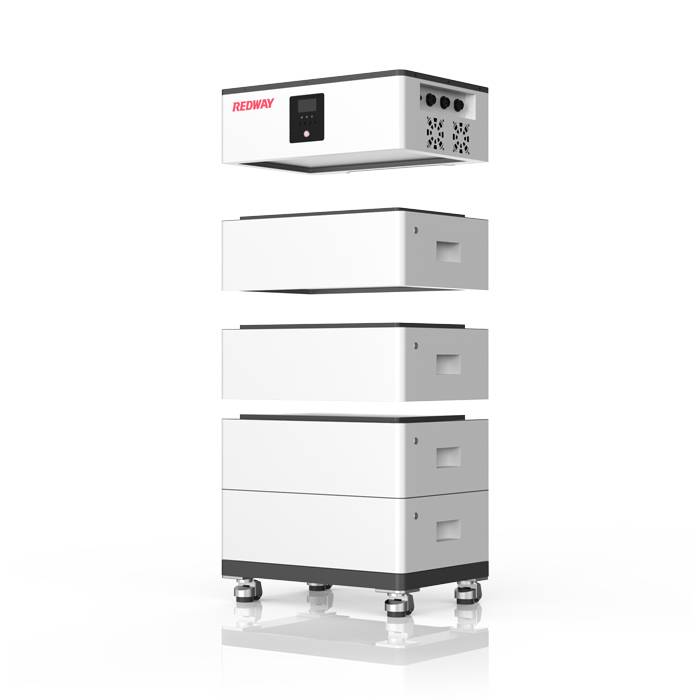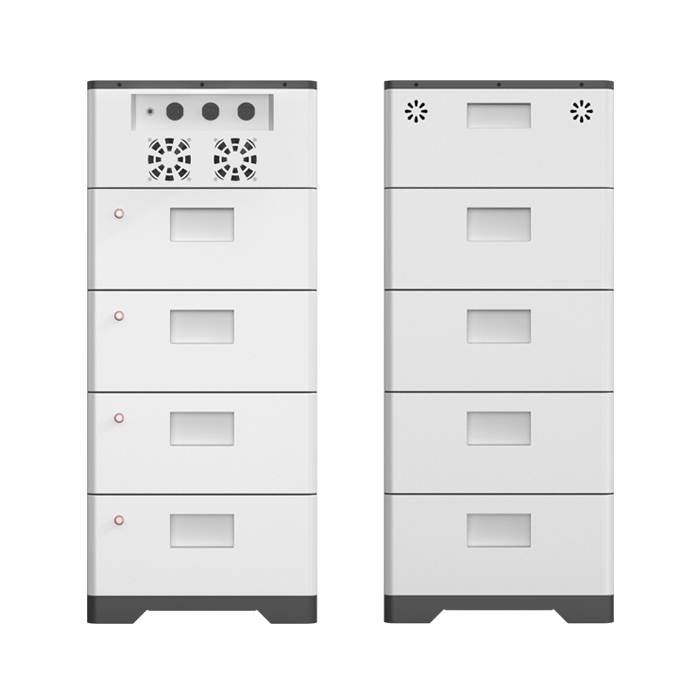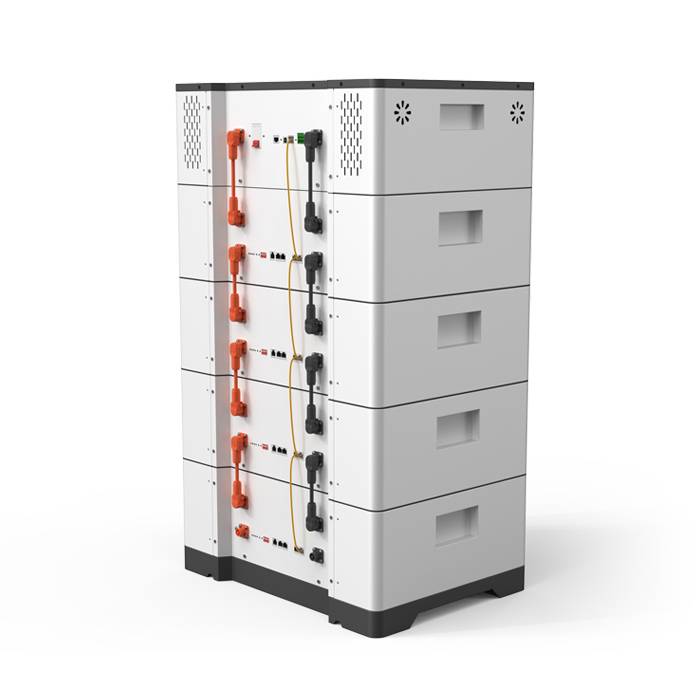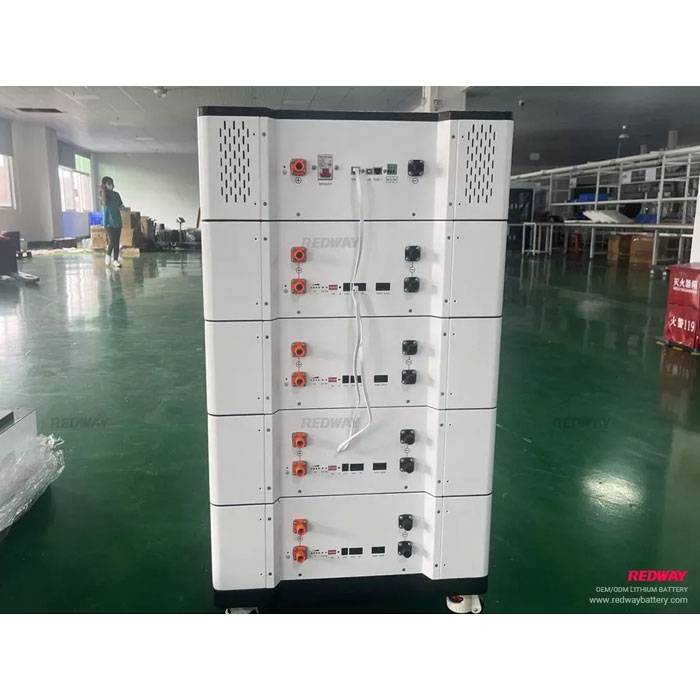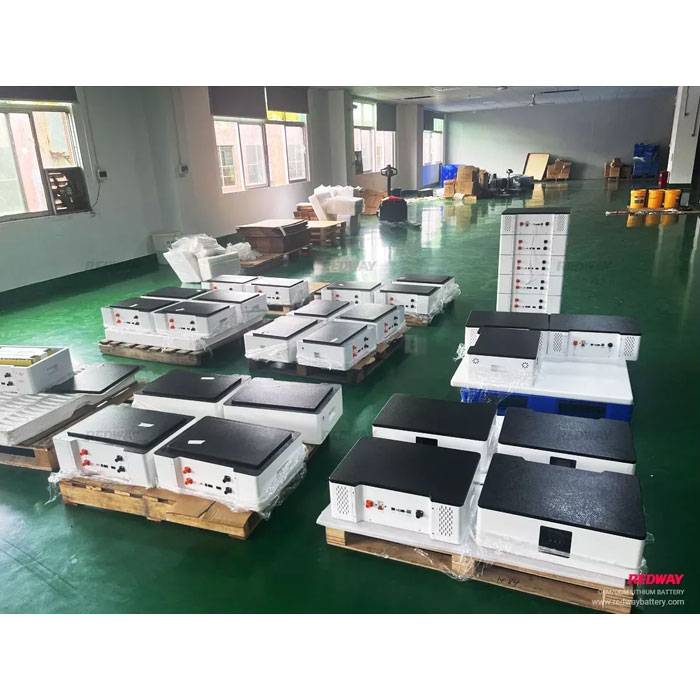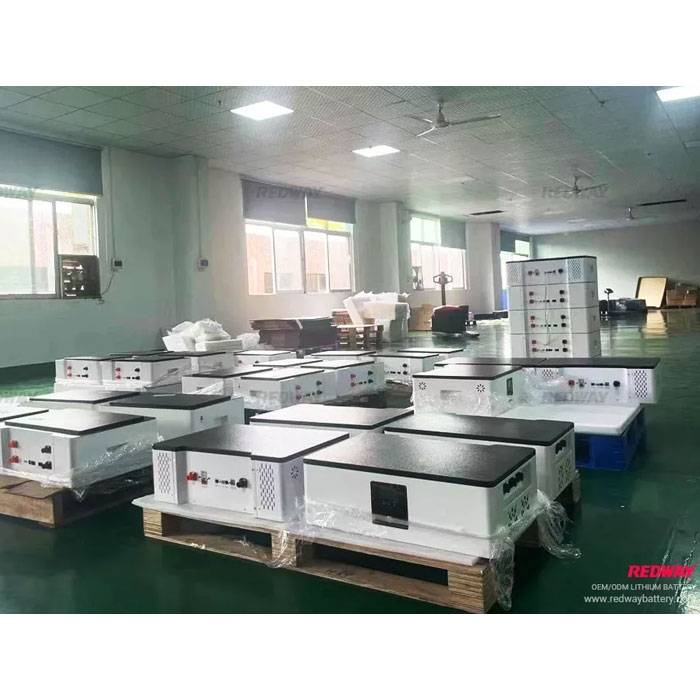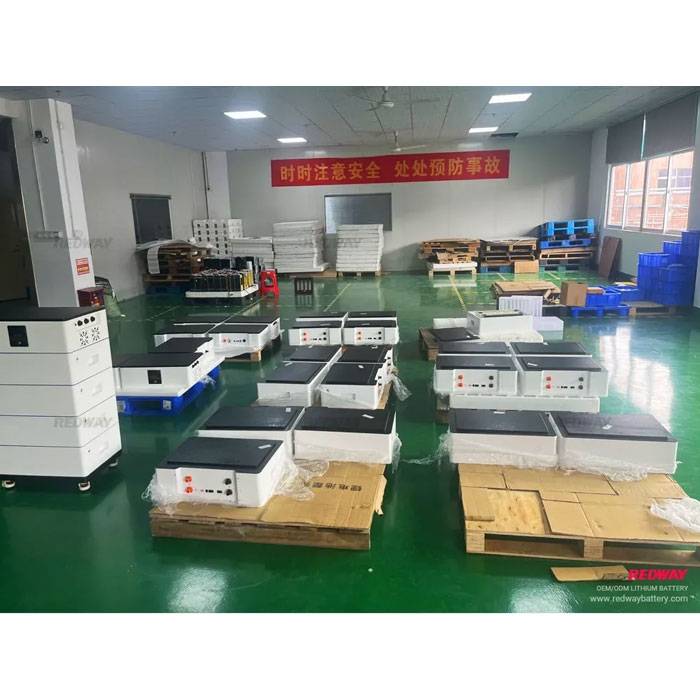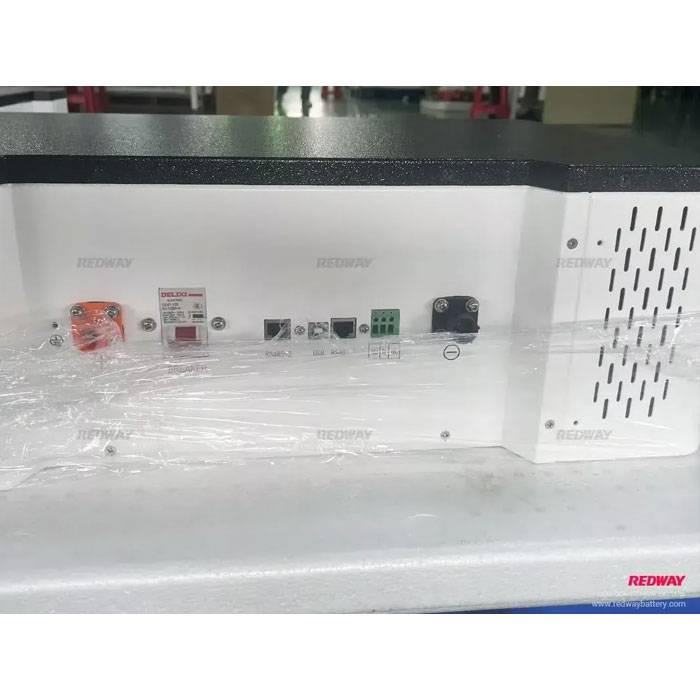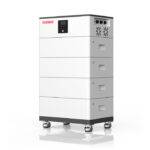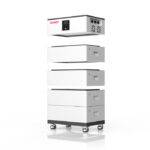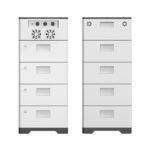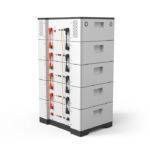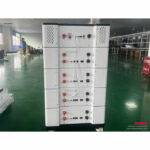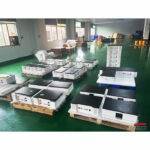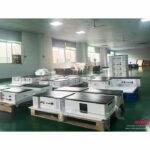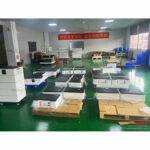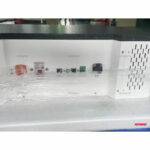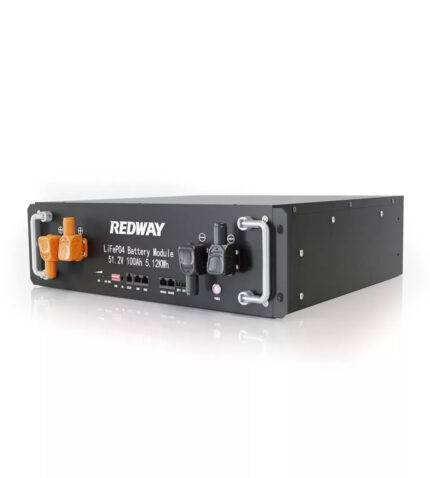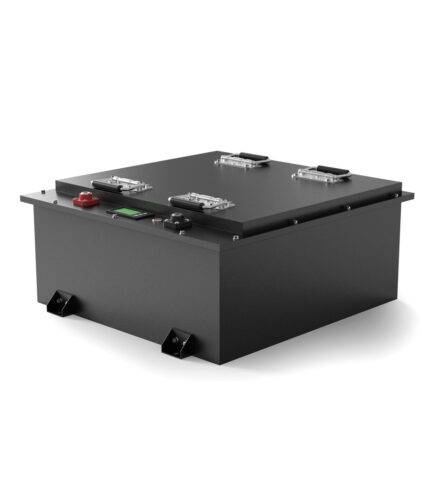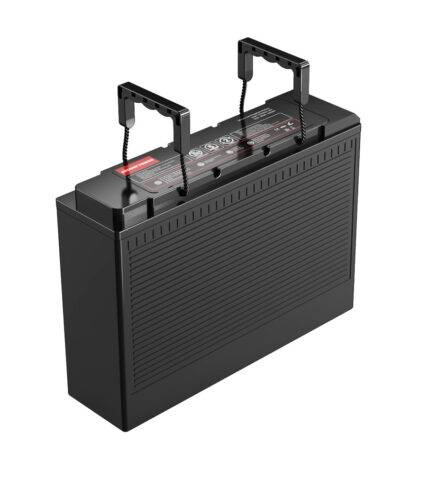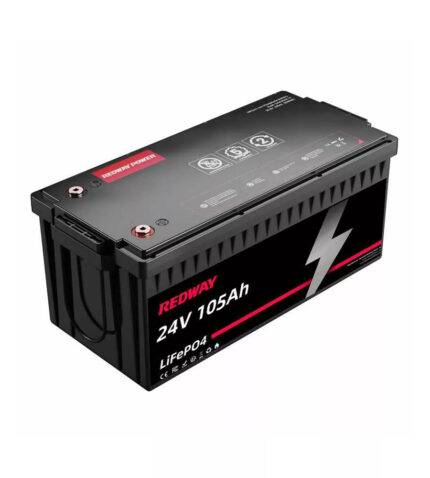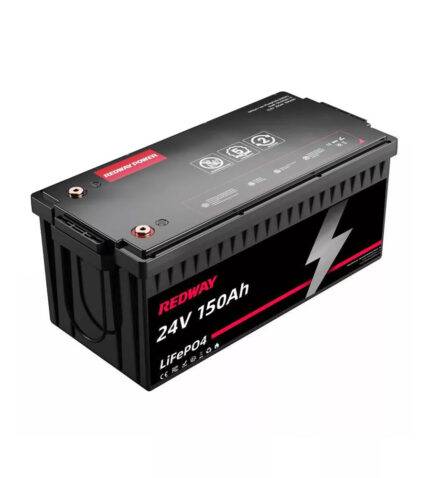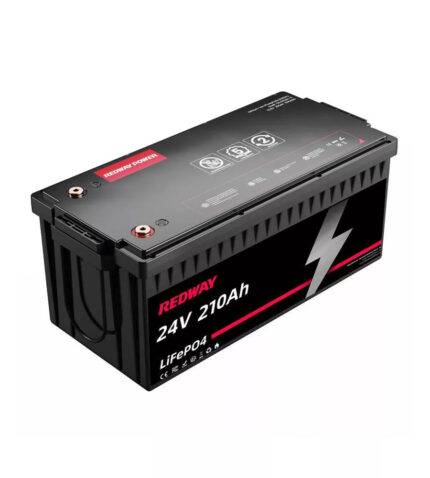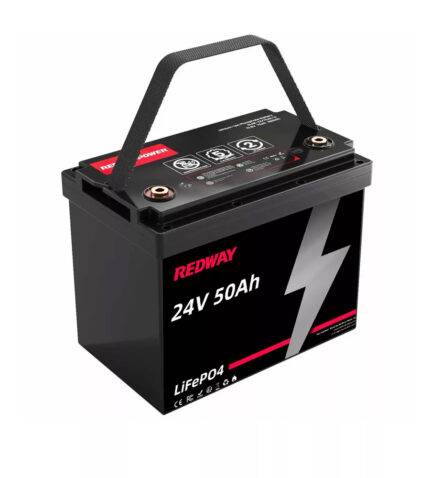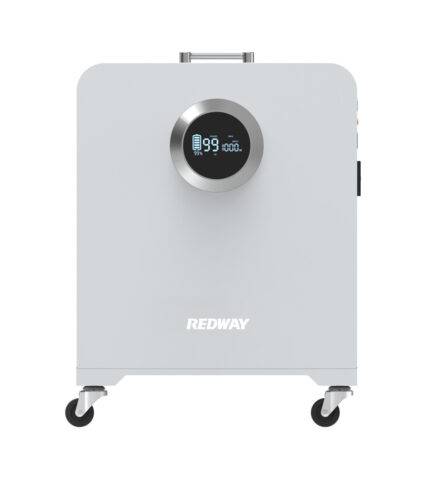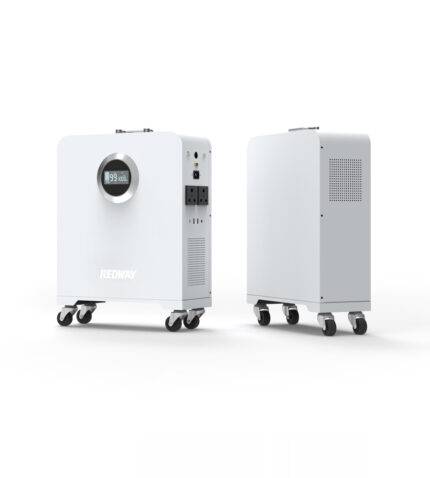51.2V 32kWh (48V 30kWh) All-in-One Home ESS System (PowerAll)
• Used for Residences, Villas, Farms, Resorts, Hotels, Inns, Restaurants, Schools, Hospitals, etc.
• MOQ: 1
• Delivery: 20 Days
• OEM / ODM: Yes
• Delivery Terms: FOB, EXW, CIF
• Payment: T/T, L/C, PayPal
• Air / Sea Freight: 10FT, 20FT, 40FT, 40FT HC, and 45FT
51.2V LiFePO4 Battery System – Scalable, High-Capacity Energy Storage for Off-Grid & Renewable Power Solutions
Efficient and Reliable Power for Residential, Commercial, and Industrial Applications
The 51.2V LiFePO4 Battery System offers scalable, high-capacity energy storage solutions with exceptional performance, longevity, and flexibility. Perfect for solar energy systems, off-grid living, backup power applications, and more, this system provides customizable configurations ranging from 5.4 kWh to 32.3 kWh for a variety of power needs.
Wholesale lithium golf cart batteries with 10-year life? Check here.
Key Features & Benefits
✅ Scalable Power – Choose from 1 to 6 batteries, with total energy storage options ranging from 5.4 kWh to 32.3 kWh for diverse power needs.
✅ Long Cycle Life – With >8000 cycles at 80% DOD, this battery system delivers exceptional long-term value and reliability.
✅ Wide Temperature Range – Suitable for charging temperatures between 0°C and 50°C, and discharge temperatures from -15°C to 55°C, enabling performance in extreme conditions.
✅ Efficient BMS Protection – Equipped with a JBD BMS for overcharge, over-discharge, and temperature protections, ensuring safe operation.
✅ Low Self-Discharge – Retains power with <2% self-discharge per month, ideal for long-term storage applications.
✅ Quiet & Efficient Operation – ≤50 dB noise level, making it ideal for indoor environments.
✅ Compact & Modular Design – With a metal shell and optional colors (White, Black, Gray, Yellow), this system fits seamlessly into your space.
✅ Easy Installation & Mobility – Designed for horizontal installation, with bottom wheels for easy transport.
✅ Advanced Communications – Supports RS485, RS232, CAN bus, WiFi, Bluetooth, USB, and APP control for easy remote monitoring and management.
Technical Specifications
- Nominal Voltage: 51.2V
- Nominal Capacity: 105Ah to 630Ah
- Nominal Energy: 5.4 kWh to 32.3 kWh
- Max Charge Voltage: 58.4V | Discharge Cut-off Voltage: 40V
- Max Continuous Charge/Discharge Current: 100A
- Cycle Life: >8000 cycles (80% DOD 0.5C)
- Self-Discharge Rate: <2% per month
- Operating Temperature: Charge: 0°C to 50°C | Discharge: -15°C to 55°C
- IP Rating: IP40 (Indoor)
- Dimensions (L × W × H):
- 1 Battery: 580 x 420 x 430 mm
- 2 Batteries: 580 x 420 x 615 mm
- 3 Batteries: 580 x 420 x 800 mm
- 4 Batteries: 580 x 420 x 985 mm
- 5 Batteries: 580 x 420 x 1170 mm
- 6 Batteries: 580 x 420 x 1335 mm
- Weight:
- 1 Battery: 87 kg (~192 lbs)
- 2 Batteries: 142 kg (~313 lbs)
- 3 Batteries: 197 kg (~434 lbs)
- 4 Batteries: 252 kg (~555 lbs)
- 5 Batteries: 307 kg (~677 lbs)
- 6 Batteries: 362 kg (~798 lbs)
- Battery Shell: Metal
- Cooling Mode: Air
- Noise: ≤50 dB
- Design Life: 20 Years
- Warranty: 10 Years
Inverter Specifications
PV Charge:
- Solar Charge Type: MPPT
- Max Output Power: 5 kW
- Operating Voltage Range: 120V~500V
- MPPT Voltage Range: 120V~450V
- PV Charging Current Range: 0~80A
AC Charge:
- Max Charge Power: 2100W
- AC Input Voltage Range (EU): 220V / 230V
- AC Input Voltage Range (US): 110V / 120V
- AC Charge Current Range (EU): 0~60A
- AC Charge Current Range (US): 0~40A
Inverter Output:
Want OEM lithium forklift batteries at wholesale prices? Check here.
- Rated Output Power: 5 kW
- Peak Power: 10 kVA (EU) / 7 kVA (US)
- Frequency: 50Hz (EU) / 60Hz (US)
- Overload Current: 40A
- THD: <3%
Applications
- Residential & Commercial Solar Power Systems
- Off-Grid Energy Solutions
- Backup Power Systems
- RV, Marine, and Off-Grid Applications
- Battery Storage for Renewable Energy
Upgrade Your Energy Storage
The 51.2V LiFePO4 Battery System offers powerful, scalable, and long-lasting energy storage for a wide range of residential, commercial, and industrial applications. With a modular design, high energy density, and robust performance, this system ensures your energy needs are met reliably for years to come.
🔋 Transform your energy setup with advanced LiFePO4 technology today!

| Specifications | ||||||
|---|---|---|---|---|---|---|
| Number of Batteries | 1 | 2 | 3 | 4 | 5 | 6 |
| Nominal Energy | 5.4 kWh | 10.8 kWh | 16.1 kWh | 21.5 kWh | 26.9 kWh | 32.3 kWh |
| Nominal Capacity | 105Ah | 210Ah | 315Ah | 420Ah | 525Ah | 630Ah |
| Weight | 87kg | 142kg | 197kg | 252kg | 307kg | 362kg |
| Dimensions [L x W x H] |
580 x 420 x 430 mm | 580 x 420 x 615 mm | 580 x 420 x 800 mm | 580 x 420 x 985 mm | 580 x 420 x 1170 mm | 580 x 420 x 1335 mm |
| Battery Cell Type | LiFePO4 | |||||
| Nominal Voltage | 51.2V | |||||
| Max Charge Voltage | 58.4V | |||||
| Discharge Cut-off Voltage | 40V | |||||
| Max Continuous Charge Current | 100A | |||||
| Max Continuous Discharge Current | 100A | |||||
| Charge Temperature | 0°C ~ 50°C | |||||
| Discharge Temperature | -15°C ~ 55°C | |||||
| Operating Humidity Range | <85% | |||||
| Nominal Operation Altitude | ≤4000 m | |||||
| Max Stackable Quantity of Batteries | 6 | |||||
| Cycle Life | >8000 Cycles (80% DOD 0.5C) | |||||
| Cooling Mode | Air | |||||
| Noise | ≤50 dB | |||||
| Working Environment | Indoor | |||||
| Installation Method | Horizontal | |||||
| Self-Discharge | <2% (Per month) | |||||
| IP Rating | IP40 (Indoor) | |||||
| Battery Shell | Metal | |||||
| BMS | JBD BMS | |||||
| Communications | RS485 / RS232 / CAN bus / WiFi / USB / Bluetooth / APP | |||||
| Optional Functions | 4G / GPS / Active Balance / etc. | |||||
| Accessories | Inverter Power Cable, Parallel Cable, Communication Cable, Grounding Wire | |||||
| Color | White / Black / Gray / Yellow | |||||
| Design Life | 20 Years | |||||
| Warranty | 10 Years | |||||
| User Manual | Yes | |||||
| Bottom Wheels | Yes (x 4) | |||||
| Certifications | UL1642 / IEC62619 / CE / UN38.3 | |||||
| Inverter Specifications | ||||||
| PV Charge | EU | US | ||||
| Solar Charge Type | MPPT | MPPT | ||||
| Max Output Power | 5 kW | 5 kW | ||||
| PV Charging Current Range | 0~80A | 0~80A | ||||
| PV Operating Voltage Range | 120V~500V | 120V~500V | ||||
| MPPT Voltage Range | 120V~450V | 120V~450V | ||||
| AC Charge | EU | US | ||||
| Max Charge Power | 2100W | 2100W | ||||
| AC Charge Current Range | 0~60A | 0~40A | ||||
| Rated Input Voltage | 220V / 230V | 110V / 120V | ||||
| Input Voltage Range | 90V~280V | 90V~140V | ||||
| AC Output | EU | US | ||||
| Rate Output Power | 5 kW | 5 kW | ||||
| Max Output Current | 40A | 40A | ||||
| Frequency | 50Hz | 60Hz | ||||
| Overload Current | 40A | 40A | ||||
| Inverter Output | EU | US | ||||
| Rate Output Power | 5 kW | 5 kW | ||||
| Peak Power | 10 kVa | 7 kVa | ||||
| Power Factor | 1 | 1 | ||||
| Rated Output Voltage (Vac) | 230V | 120V | ||||
| Frequency | 50Hz | 60Hz | ||||
| Auto Switch Period | UPS Mode <10ms / APL Mode <20ms | UPS Mode <10ms / APL Mode <20ms | ||||
| THD | <3% | <3% | ||||
| Inquiry | ||||||
Group 1: General ESS Specifications
What is the voltage and capacity of the ESS?
The voltage of an ESS typically ranges from 48V to 300V, depending on the system. The capacity is often measured in kWh, and common configurations for residential use are between 5kWh and 30kWh, which allows for sufficient energy storage to meet home consumption needs.
How does the All-In-One design improve efficiency?
The All-In-One design enhances efficiency by combining essential components like the battery, inverter, and charger into a single unit. This integration reduces installation complexity, saves space, and minimizes energy losses from separate components. It allows for a streamlined, cost-effective solution for residential energy storage.
What are the key performance specifications listed?
Key performance specifications for an ESS include battery capacity, voltage, charge/discharge cycles, and round-trip efficiency. Additional details like depth of discharge (DoD), max output power, and self-consumption rate are also crucial. These parameters determine how well the system meets energy needs and operates over time.
Does the ESS include safety certifications or features?
Yes, ESS units typically come with safety features like overcharge protection, over-discharge protection, and temperature regulation. They are also certified to meet industry standards such as CE, UL, and IEC, ensuring the system is safe for residential use. These certifications guarantee high-quality performance and compliance with safety regulations.
What is the expected lifespan under normal use?
The expected lifespan of an ESS is typically around 10 to 15 years under normal use, depending on factors like temperature, cycle depth, and maintenance. Regular upkeep can extend this lifespan, ensuring the system continues to deliver efficient performance and provide cost savings over the years.
Are solar panel compatibility details provided?
Yes, most ESS systems are compatible with solar panels, as they are designed to store excess solar energy for later use. Compatibility details include voltage range and inverter capacity, ensuring that the solar panel system integrates efficiently with the energy storage solution for optimal solar energy utilization.
Group 2: 48V 30kWh Residential ESS
What are key features of 48V 30kWh home systems?
Key features of a 48V 30kWh system include high capacity, providing up to 30kWh of energy storage. It offers scalable power, long battery life, and solar integration for self-sufficient energy solutions. Additionally, these systems are equipped with smart management for optimizing energy flow and enhancing system reliability.
What advantages does integrated energy storage offer?
Integrated energy storage offers several advantages, such as simplified installation, space efficiency, and reduced system complexity. By combining solar panels and storage into a single, cohesive unit, homeowners enjoy improved energy management, lower costs, and a seamless transition between solar generation and energy consumption.
How is the 30kWh capacity optimized for homes?
The 30kWh capacity is optimized for homes by meeting the typical daily energy consumption of most households, allowing for off-grid operation or peak-shaving during high demand. It ensures that energy usage is efficiently distributed, reducing electricity bills and enhancing the overall sustainability of the home’s energy system.
What safety certifications apply to 48V home storage?
Safety certifications for 48V home storage systems include UL 9540, CE, and IEC 62133. These certifications verify that the system meets global safety standards, ensuring safe operation under normal and emergency conditions. Battery management systems (BMS) also provide fire prevention, overcharge protection, and temperature control for safe use.
How to maintain a 48V 30kWh storage system?
To maintain a 48V 30kWh storage system, perform regular visual inspections to check for damage, ensure battery terminals are clean, and monitor charging cycles. Periodic updates to the inverter software and temperature regulation ensure that the system remains efficient and continues to operate at optimal performance levels.
Can it integrate with solar or grid power sources?
Yes, the 48V 30kWh storage system can seamlessly integrate with both solar power systems and the grid. This hybrid setup allows for solar energy storage when the sun is available, and the system can be used for backup power or to offset grid electricity costs during high-demand periods.
Group 3: 48V ESS Specifications and Certifications
What are key specifications of 48V 30kWh residential ESS?
Key specifications of the 48V 30kWh residential ESS include battery voltage of 48V, capacity of 30kWh, and round-trip efficiency of 90%. The system supports a wide temperature range, ensuring stable performance in both cold and hot climates. It also features an integrated inverter, providing an all-in-one solution for residential energy storage.
Which certifications ensure China OEM ESS safety compliance?
China OEM ESS systems must meet safety standards such as CE, UL 9540, and ISO 9001 for quality management. These certifications ensure that the systems meet international safety and performance standards. Additionally, RoHS compliance ensures the systems are free from harmful substances, supporting both safety and environmental protection.
How does 48V ESS compare to higher voltage alternatives?
The 48V ESS is generally more cost-effective and easier to install compared to higher voltage alternatives like 300V systems. While higher voltage systems may offer greater energy capacity and higher efficiency, 48V systems strike a balance between affordability, ease of use, and reliability for residential applications.
What customization options exist for 30kWh residential ESS?
Customization options for a 30kWh residential ESS include battery chemistry (LiFePO4 vs. Li-ion), inverter capacity, and mounting configurations (wall-mounted or floor-standing). Some systems also offer integration with smart home technologies and remote monitoring features, allowing users to tailor the system to their specific energy needs and lifestyle.
What maintenance requirements apply to OEM ESS solutions?
OEM ESS solutions typically require periodic battery inspections, software updates, and cleaning of components to ensure optimal performance. Maintenance also involves checking inverter settings, cooling systems, and system firmware for any required updates. Following manufacturer guidelines can help extend the lifespan of the system.
How do China OEMs optimize ESS for renewable integration?
China OEMs optimize ESS for renewable integration by designing systems with solar panel compatibility, efficient battery management, and smart inverters. They ensure that the systems are designed to maximize energy savings and can be easily integrated with solar arrays and wind power solutions, promoting sustainability and off-grid living.
Group 4: PowerAll Home Battery Storage
What is the capacity of PowerAll Home Battery Storage?
The PowerAll Home Battery Storage typically offers a 32kWh capacity, providing enough energy to support a typical household for a full day. This high-capacity system ensures reliable power supply, even during extended power outages, and optimizes the use of solar energy in residential settings.
What voltage does the PowerAll Home Battery operate at?
The PowerAll Home Battery operates at 48V, which is common for residential energy storage systems. This voltage is ideal for efficient power conversion, and the system is designed to handle typical home energy demands with low efficiency losses.
How long to charge PowerAll 32kWh battery fully?
The PowerAll 32kWh battery typically takes 8 to 12 hours to fully charge when using a standard AC charger. Charging time can vary depending on factors like the charging source and ambient temperature, with faster charging options available when using high-power DC chargers.
What is the lifespan of PowerAll Home Battery Storage?
The PowerAll Home Battery has an expected lifespan of approximately 10 to 15 years with proper maintenance. This lifespan is influenced by the charging cycles, operating temperature, and the overall maintenance of the system, which can be extended with periodic inspections and software updates.
Does PowerAll 32kWh battery support solar integration?
Yes, the PowerAll 32kWh battery is designed for solar integration, making it an ideal choice for homes with solar power systems. It allows for the storage of excess energy generated by solar panels for later use, ensuring continuous energy supply even when solar generation is low.
What safety certifications does PowerAll Home Battery have?
The PowerAll Home Battery comes with multiple safety certifications including UL 9540, CE, and RoHS, ensuring compliance with global safety and environmental standards. These certifications verify the system’s reliability, durability

